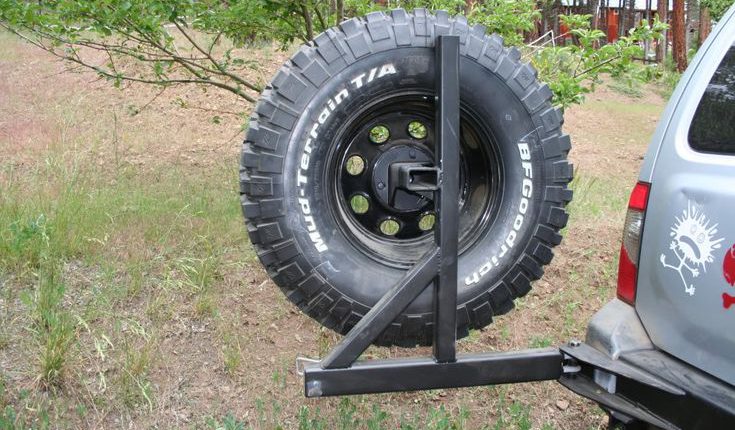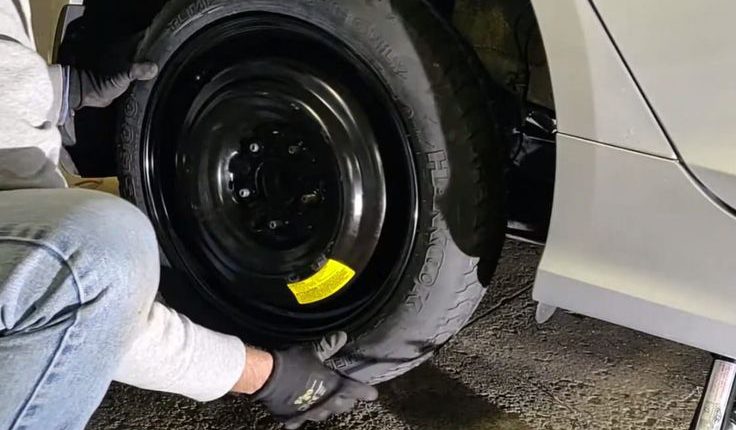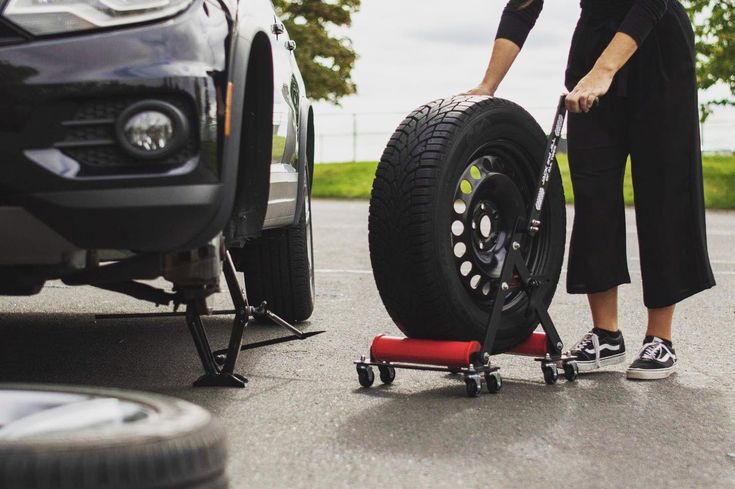A quick question: When was the last time you checked the tire pressure for your spare tires? The spare tire is usually located in the trunk of your car, for the pickup truck, the tire will be mounted underneath the undercarriage.
It’s out of sight and very easy for us to forget the existence of spare tires until the time you need them. How to take care of the spare tire in your car and what the standard PSI for spare tire should be? The answer will be revealed in the article.
Contents
Spare Tire On Car: Is It Really Necessary?
Imagine when you are driving on the highway, suddenly your normal tires get flat. You open the trunk of your car and realize that there is no spare tire. Unfortunately, such situations often happen to drivers, because many people are still not fully aware of the importance of this type of tire.
Therefore, having a spare tire in the car is always handy to avoid unexpected and avoidable situations. You should always have a spare tire in your car because you never know when you’ll be flat or punctured and stuck on the side of the road. Spare tires can provide you with a direct replacement, allowing you to move back until the tire repair service is on there.
A spare tire is considered a lifesaver when the main tire has a problem along the way, usually located in the rear luggage compartment or outside covered. With a smaller size than the main tire, the spare tire will reduce the weight significantly. In addition, the vehicle will be lighter and use less fuel when operating the engine. On top of that, the spare tire is small in size, saving space for the luggage compartment.
>> Read more: How Are Tires Made? Learn About Parts Of A Tire?

How Much Is The Correct PSI For Spare Tire?
Knowing what PSI your tires should be is very important for your safety. A tire should be replaced, with a spare tire, when one of your tires is deflated or flat. But how to know how much air should be in a spare tire? The ideal pressure for the spare tire is around 60 pounds per square inch (PSI). It’s a smaller tire and it’s only for emergency use, typically going like a max of like 55 miles an hour.
If you own a heavier vehicle like a truck or SUV, you will need full-sized spare tires. And the air pressure that is recommended for the tires typically ranges from 32 and 38 PSI. However, we recommend you check the owner’s manual to find the correct PSI. This parameter is always written on the stickers that are molded into the side of your tires or on the side of the wall.
Many drivers wonder why do spare tires have higher psi than normal tires. The reason behind such a high PSI is that their dimension is smaller. Because the spare tires have a contact surface half the size of a full-size tire, the PSI needs to be higher than the normal tires to compensate for the reduced area.
You can understand simply that the space-saving tire has less tread area than your typical full-size spare tire. To maintain full contact of the rubber with the road surface, higher pressure is required for the tread to contact, typically 60 psi. Since the spare tire is only used in emergencies, it is rarely used, so it is better to have extra air pressure in it. Otherwise, you may encounter a situation where the spare tire cannot be used because the air pressure in it is too low.
How To Properly Inspect And Maintain Spare Tires
We are sure that spare tires are one of the parts in your car that are easy to overlook in vehicle maintenance. If you don’t take care of this tire, you may be stranded on the road because you don’t have a spare tire to change due to a flat spare tire or any damage. It’s a good idea to get into the habit of checking and maintaining the spare tire before every trip.
How often should you check your spare tire?
Many people think that the spare tire is only stored in the trunk and is not used much. Unless the tire is punctured, the tire will still maintain the same amount of air pressure when it is initially inflated. Like all four tires, spare tires can be negatively impacted by a variety of factors, from temperature to UV exposure, and even time. We recommend checking your spare every time you rotate your tires, periodically every 6,000-8,000 miles.
Spare tires are prone to slow air leaks and fluctuating temperatures. Checking the air pressure regularly is a very important step. You should check the air pressure in your spare tires every time when checking the other tires. This will help ensure that the spare tire is properly inflated as you want to use it. Driving with an under-inflated tire, especially a smaller one, can cause serious damage to your wheel and car.
How to check the air pressure for spare tires?

Pressing on the tire is not a good measure to inspect the air pressure of your spare tires to know when it needs to fill up. Unlike your usual four tires, the space-saver tire usually has to be inflated to about 60 PSI; If your PSI is too low, it can break and damage the wheel. Even so, a fully inflated “donut” is a temporary remedy, usually, you can drive up to 100 miles at speeds, not up to 55 mph.
To check tire pressure, you will need a tire gauge. You can find this tool in any auto parts store. After that, remove the valve cap from the tire. Then, place the tire pressure gauge on the valve stem and press firmly to make the squeal disappear and the tire pressure gauge will display the information. With a standard gauge, the pressure pushes the hand to a specific level on the dial. With an electronic tire pressure gauge, the information will be displayed on the screen.
Tips to maintain your spare tires
In any situation, we hope that the spare tire will just sit in your trunk and carry on your trip. But in case you need it, it should be in top condition ready to get you where you want to go. Follow these tips to keep your spare tire in good shape:
Check the pressure:
Designed and functionally the same as any other tire, a spare tire is also greatly affected by temperature and other factors and directly affects the air level in the tire. Therefore, the spare tire air pressure should be monitored to ensure the proper level according to the manufacturer’s recommendations.
Don’t ignore the signs of aging:
Over time, the spare tires will show the signs of aging that you can notice visually. First, you can check the tire surface to make sure there are no cracks in the tire. If cracks appear in large numbers, you should replace the spare tire. Don’t forget to double the tire tread. Treads will make traction on the road. Although spare tires usually don’t wear out at the same rate as other tires, their performance will reduce over time. You can check tread depth by many methods like using a penny.
Rotate your tires:
This method just is applied for full-size spare tires (like trucks, SUVs, or sedans). You should rotate your spare tires every 6000-8000 miles. Normally, the spare tires will be rotated into the correct rear position and the old part becomes the spare.
Clean and preserve the spare tires:
Cleaning the spare tires allows you to inspect for irregularities, cracks, and leaks on the tire surface. Use a quality protectant with UV protection to improve the life of the rubber and prevent cracking or cracking. Or use specialized cleaners to remove stains and stains.
For the spare tires that are mounted beneath your truck. You can use hard tire covers (steel plates) or plastic covers to protect the tire from debris or rock. Also, keep it clean and limit the damage to the rim or rubber.
>> Read more: How to Choose The Best Air Compressor For Your Car
How Long Does A Spare Tire Last?
The years will depend on how often each driver uses the spare tire. Over time, even if your spare tire is not unused, the quality and performance of the tire will decrease. During storage, the rubber surface of the tire contacts and reacts with the oxygen in the air. Oxidation will break the rubber layer and gradually crack.
To limit this process, manufacturers have used Ozonate additives to help prevent the rubber from degrading and that is why the life of unused spare tires can be extended from 6 to 10 years. So when your spare tire exceeds this period, replace the tire immediately. Make sure you replace the spare tire with the correct type of tire. Each car model will require different types of spare tires. You can use full-size tires or a donut (space-saving).
In Conclusion
We know that the only thing worse than having a flat tire is finding that your spare tires are flat too when you are driving. The truth is that people rarely check their spare tires in their free time and don’t even see it until they really need them. It’s essential to make sure your spare tire is ready to roll for the days you need it most. Knowing the exact PSI for spare tire will limit this unwanted situation. Don’t hesitate to comment in the box below if you have any questions or concerns.



